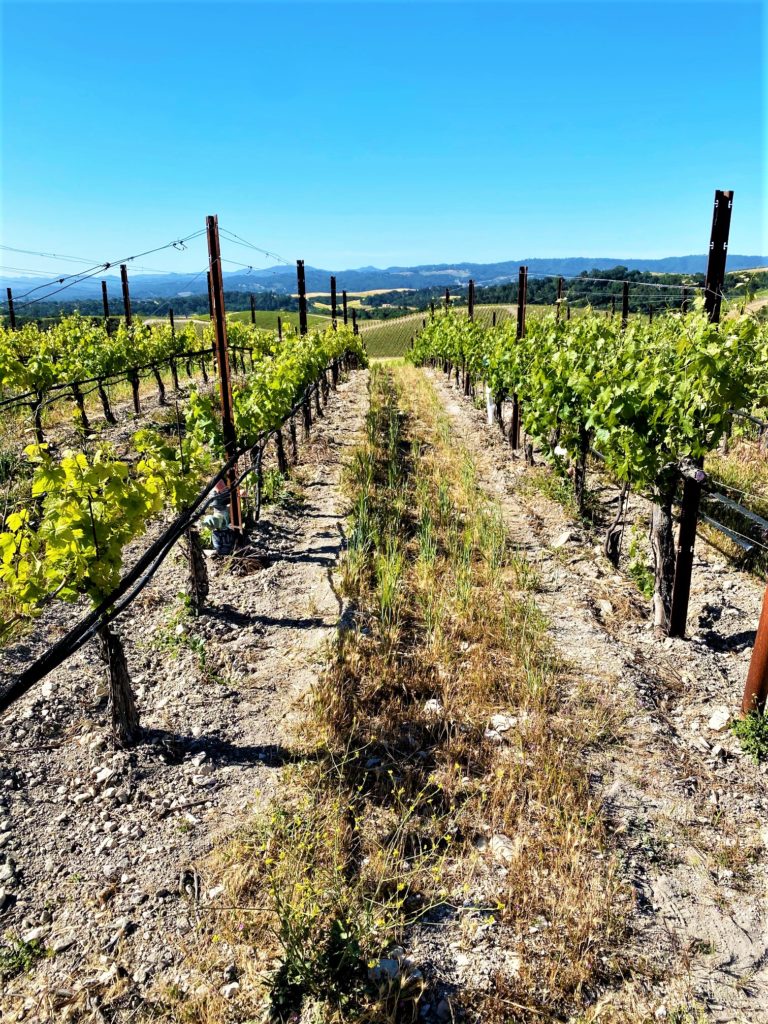Ask a Viticulturist: Which rootstock should I use for Tempranillo?
“As a part of personal research and experiment, would anyone know on which rootstocks Tempranillo is usually grafted in Spain and US-California Regions where it has performed well…including the most suitable trellis system for this variety? Any help or a pointing in the right directing shall be much appreciated…”
This question allowed me to brush off my abysmal Spanish language skills…muchas gracias! Many years ago, as a fresh-faced college student, I spent a year in Madrid drinking cheap Tempranillo in smokey bars with my roommate, a wine writer and enologist in her mid-50s. That being said, I was more interested at that time in drinking wine and less about growing it. Youth.
As far as rootstocks are concerned, your decision has a lot more to do with the soil than the scion. Do you have nematodes or phylloxera (please don’t tempt fate)? Problems with drought or stagnant shallow soil moisture? Is your soil rich in lime or serpentine? We write more extensively about rootstock selection here. It’s probably the most important decision you can make when planting a vineyard and it’s one you really can’t walk back once you realize you’ve made a mistake.

There are instances of incompatibility between some varieties and rootstock. Syrah for example is said to not work well with 110R. We’ve also noticed issues with Merlot and St. George (Rupestris du lot) and 5C rootstocks. I haven’t seen anything written about Tempranillo having any issues with particular rootstocks. That doesn’t mean there aren’t any, but incompatibility is rare. You’re far more likely to have issues regarding soil.
You asked what they use in Spain though, so here goes. Tempranillo is diffuse throughout the Iberian Peninsula so just to narrow things down, I’ll stick to Rioja. This region has varied soils ranging from calcareous and iron-rich clays to alluvial soil. Tempranillo is a vigorous variety, so you want to focus on the nutrient and water holding capacity of each soil, which depends more on texture than on parent material. Plant Tempranillo on a rootstock like 1103P in a rich loamy soil, and you’ll be fighting spaghetti monsters until you’re reading to rip them out. A local nursery in Logroño (La Rioja) offers a complete list of rootstocks that allows you to filter for limestone (calizia), drought (sequia), and fertile soils (suelos fertiles). I’ll be honest, some of these are completely new to me. Have fun.

As far as calcareous soils go (limestone rich), we see a lot of this in the Central Coast. Many famed regions in Europe credit limestone for the high-quality of their wine. I can’t attest to the validity of that statement. What I can say is that soils like this tend to have a high pH, which can cause problems with iron chlorosis and availability of phosphorous. Scientists at the Universidad Autonoma de Madrid (my study-abroad alma mater!) recently published their research on rootstocks and Tempranillo specifically on this challenging soil type. You can read the whole thing here, but the take-away is that the best rootstocks for wine quality are 5BB and 5C. Keep in mind though that if your soil presents other challenges, this may not be the best choice. I mean, 5BB is a rather vigorous rootstock in some soils.

According to Bettiga et al., Tempranillo and Zinfandel seem to thrive in similar environments and are often found in old vineyards together. If that’s the case, you could try head-trained or you could go with VSP or sprawl. It doesn’t seem too picky. The one thing to keep in mind is vigor, Bettiga et al. recommends giving them between 8 to 10 feet between vines, which seems nuts to me but then again, I don’t have a lot of personal experience with this variety.
Anyone out there with Tempranillo experience? Let us know what you’ve found!
Citations:
Bettiga, L. J. (2003). Wine grape varieties in California. University of California, Agriculture and Natural Resources.
Main photo: Sea Shell Cellars. (n.d.). Tempranillo. Sea Shell Cellars. https://seashellcellars.com/blogs/grape-education/tempranillo.
Lobera, C. L. (2019). Evaluacion de la adaptacion de Vitis Vinifera CV. Tempranillo sobre 16 portainjertos en suelos calcareos. Aplicaciones en agricultura de precision. Facultad de ciencias departamento de quimica agricola y bromatologia.



We have a small block of Tempranillo planted on a ridge top of sandstone based soils in southeastern Napa in 1998, using 110R. 5×8 spacing, vsp. The initial vigor was a big surprise, given the site. I learned to wait until the big leaves droop in the afternoon sun before giving them a little drink. They bounce right back! Wines have been great, if I may say so.